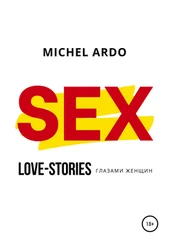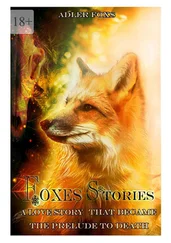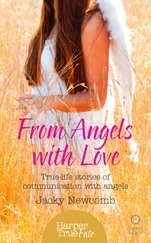“In other words, you’d make fun of me.”
“I’m making fun of cowboy kitsch, of the Big Tobacco Marlboro Man mythos, of the genocidal, racist, anti-environmental, heil Adolph Coors’s right-wing all-American West.”
“No, you’re making fun of me. And you’re wrong, by the way. In the movie, he doesn’t answer anything like that. He doesn’t answer at all right away. He goes off to think about it, like you could have done, and he comes back with the answer.”
“Okay, I give. Tell me the right answer.”
“You want to know, go see the movie.”
* * *
He doesn’t see the movie until two years later, after she has vanished. Clearly, by “vanish” she hadn’t meant that she’d be wiped from his memory.
Ned doesn’t remember the title, if he ever knew it, but one night, unable to concentrate on any book in the house, he Googles Western Costner Bening , and finds fifty thousand five hundred entries for a film called Open Range . Kevin Costner not only stars in it; he also directed it.
According to the reviews that Ned skims, it’s a movie about the war between free grazers and landowners: “A former gunslinger is forced to take up arms again when he and his cattle crew are threatened by a corrupt lawman.” The free grazers—Costner as the gunslinger, Charley Waite, and Robert Duvall as Boss Spearman—are the good guys. The evil rancher who controls the law is played by Michael Gambon. Their economic clash is a moral contest: greedy corporate America versus the don’t-fence-me-in values of the Old West. The conflict plays out against what many reviewers agree is a beautifully photographed “iconic vista”—Montana, 1882, a big-sky landscape that makes it look as if there were enough to go around for everyone, especially since the original free-grazing tribes have been eradicated. The film was actually shot in Alberta.
Reviews compare Open Range to classics like High Noon. Amateurs at Amazon rate it a four-star masterpiece. The Cleveland Sun News, where dollar signs rather than stars are awarded, agrees: 4½ $. It’s a Hot Pick, “a paean to the Old West,” for Boo Allen of the Denton Record-Chronicle , and an A-minus for Roger Ebert, who praises its defense of the values of a vanishing lifestyle.
That mention of a “vanishing lifestyle” catches Ned’s attention. He wonders if vanishing is a motif in the movie, a theme echoed in the love story between Costner and Bening, prompting her odd question: What if I were to vanish?
Other reviews are less enthusiastic. It’s panned in The New York Times , the Chicago Tribune , and The New Yorker . Rolling Stone despises “its insufferable nobility,” and Newsday complains of “the man’s-gotta-do-what-a-man’s-gotta-do excess” of the script. A couple reviewers find that it mirrors Bush’s cowboy presidency, with his bring-it-on War on Terror and Wanted Dead or Alive rhetoric. It makes a Worst Movies of the Year list: “a Harlequin Romance with a gunfight at the O.K. Corral.”
From the little that Ceil said, Ned had assumed that the movie was a love story, but the reviews mostly agree that Costner’s relationship with Bening seems superfluous. Bening plays Sue Barlow, with what is described on Yahoo! UK as “the steely resolve” of “a spinster who has nearly given up on love.” Iggy’s Film Reviews cautions: “Even by Harlequin Romance standards, the ties that bind these two lonely folks are flimsy. Unless Sue placed a personal ad seeking a SWM, age 40–50, who loves dogs, cares about friends and has killed before and will kill again, the attraction between the two doesn’t make a lot of sense.”
Undeterred, Ned decides to see for himself. Whatever the answer to the question about vanishing, Ceil must have experienced a shock of recognition at something in the film. Tonight, his missing her has assumed the guise of curiosity, and curiosity is preferable to feeling her absence. It’s late, already after eleven thirty, but he knows a Blockbuster that’s open until midnight, and should be able to just make it.
* * *
The street has vanished, been whited out. He’d been so absorbed in cyberspace, he hadn’t noticed. It seems to Ned that the snowfall should have a hiss of its own, something other than the swish of tires from the Dunkin’ Donuts–lit cross street at the end of the block. If the legend that Eskimos have a hundred words for snow were true, there’d be an Inuit word meaning snow-that-makes-the-familiar-unrecognizable. Ned can’t tell which of the plastered shapes lining the curb is his Volvo. He imagines having to go car by car, brushing off snow to find his, and when he realizes that he might not make Blockbuster in time, the intensity of his disappointment surprises him. Then he spots his car, dim under the only streetlight that’s burned out. Rather than take the time to scrape the windows, he scoops snow from them with his bare hands. When the engine turns over, the radio plays. He flicks on the defroster, wipers, headlights. It takes only that time for him to recognize the piano version of Mussorgsky’s Pictures at an Exhibition, the movement titled “Gnomus,” which is meant to evoke the picture of a nutcracker in the shape of a gnome promenading on deformed legs. Ned practiced this piece for a whole semester in college when he still studied piano. He hasn’t heard Pictures in years, and it occurs to him that sometimes one no longer listens to a beloved masterpiece in order to continue to love it. Even on the car radio, over the scrape of wipers, he can hear coughing from the audience. Perhaps the pianist is Sviatoslav Richter, at the legendary live recital in Bulgaria. Ned remembers reading that after Richter’s possessed performance, the Steinway he used had to be junked. He doesn’t wait for the engine to warm.
The snow-paved Blockbuster parking lot is empty and Ned leaves the car running, wipers swiping, radio broadcasting a movement titled “Catacombae,” which echoes the spectral world beneath the streets of Paris. Ghosts seem to swirl across the deserted streets of Ned’s city, as well. He rushes in and a white kid with rusty dreadlocks shoots him a dirty look from behind the counter, before directing him to the Action section. It only now occurs to Ned that the movie might be checked out and he scans the rack feeling ridiculously frantic. He’s in luck, it’s there between Steven Seagal’s On Deadly Ground and Once Upon a Time in Mexico .
Open Range in hand, Ned opens the car door onto a blasting heater and the majesty of the last movement, “The Great Gate of Kiev.” With no more reason to hurry, he silences the heater and sits in the idling car, staring out at a parking lot, watching as his tire tracks left minutes earlier are obliterated by snow gathering as it might in Kiev. The yellow Blockbuster sign subtracts itself from night. Beneath the blurred streetlights, ascending notes and falling flakes create the impression of a gossamer arch spanning Chicago Avenue. Ned slips the Volvo into gear and drives slowly toward the towering gate of snow that retreats before his headlights, impossible to enter, then topples disassembling before the whirling blue of an oncoming squad car. The vision is more imagined than hallucinated, and Ned wonders how long it’s been since he was stoned for real. Not since a vacation when Ceil wanted to see what sex would be like on hashish. Instead of smoking it, they mixed it with honey and spices based on a recipe for a sweetmeat supposedly served by Alice B. Toklas at Gertrude Stein’s soirees. That night ended in an emergency room, with Ceil faint, terrified, hallucinating. She later said she’d had an out-of-body experience and seen herself dead. “Keep talking to her,” the doctor had told Ned. “Don’t let her slip away.” It’s not a scene he wants to recall.
Читать дальше












